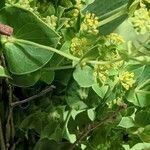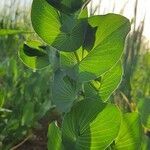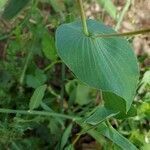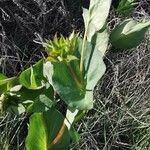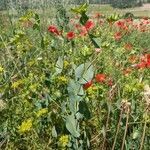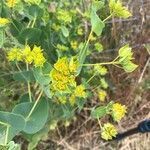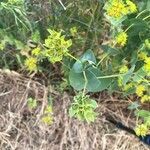It is an annual or short lived perennial shrub. It grows 60 cm high and spreads 60 cm wide. The leaves are round and bluish-green. They wrap around the stem. The lower leaves have stalks. The flowers are small and bluish green. There are large bracts around the flower groups. The fruit is oblong and 3-3.5 mm long and smooth.
Perennial herb, up to 500 mm tall. Leaves cordate-clasping, triangular-ovate. Bracts similar but much smaller. Flowers yellowish green.
